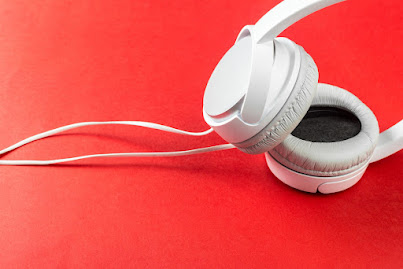Introduction:
Sony headphones offer an unparalleled audio experience, but to truly unlock their potential, connecting them to Bluetooth can elevate your listening game to new heights. Whether you're a seasoned audiophile or a casual music enthusiast, mastering the art of Bluetooth connectivity is essential. In this guide, we'll walk you through the step-by-step process of connecting your Sony headphones to Bluetooth devices, ensuring you're seamlessly immersed in your favorite tunes, podcasts, and more.
Step 1: Turn on Your Sony Headphones
Before diving into the world of Bluetooth pairing, ensure your Sony headphones are powered on. Most models feature a power button that needs to be pressed and held for a few seconds until you see a light indicator or hear a power-on sound.
Step 2: Activate Bluetooth Mode
With your headphones powered on, it's time to activate Bluetooth mode. Depending on the model of your Sony headphones, this may involve pressing a dedicated Bluetooth button or holding down a combination of buttons until you enter pairing mode. Refer to your headphone's user manual for specific instructions on how to activate Bluetooth mode.
Read More: How to Find Bose Earbuds?: Your Complete Guide
Step 3: Locate the Bluetooth Configuration on Your Device
Now that your headphones are in pairing mode, it's time to find the Bluetooth settings on your device. Whether you're using a smartphone, tablet, laptop, or any other Bluetooth-enabled device, you'll typically locate the Bluetooth settings in the device's settings menu. Look for options like "Connections," "Wireless & Networks," or simply "Bluetooth." Once you've found the Bluetooth settings, tap or select to enter the menu.
Step 4: Search and Pair
Once you're in the Bluetooth settings menu, your device will begin searching for available Bluetooth devices. Look for your Sony headphones in the list of available devices. They're often listed with the model name or a unique identifier. Choose your headphones to kickstart the pairing procedure.
Step 5: Confirm Pairing
After selecting your Sony headphones, your device will attempt to establish a Bluetooth connection. You may be prompted to confirm the pairing on both your headphones and your device. Follow the on-screen instructions to confirm the pairing. Once paired successfully, you'll typically hear a confirmation sound or see a notification on your device.
Read More : How to Connect Bose Wireless Headphones to Laptop? : Ultimate Guide for Seamless Connection
Step 6: Enjoy Wireless Freedom
Congratulations! You've successfully connected your Sony headphones to Bluetooth. It's time to relish the freedom of wireless audio. Whether you're streaming music, watching videos, or taking calls, you can now do so without being tethered to your device. Adjust the volume, play, pause, and skip tracks directly from your headphones for a truly immersive listening experience.
Troubleshooting Tips:
If you're having trouble pairing your Sony headphones, ensure they're sufficiently charged and in Bluetooth pairing mode.
Ensure that your headphones are not currently connected to another device. If they are, disconnect them before attempting to pair with a new device.
Restart both your headphones and the device you're trying to pair them with to reset the Bluetooth connection.
If you're still experiencing issues, consult the user manual for your specific model of Sony headphones or reach out to Sony customer support for assistance.
Conclusion:
Mastering the art of connecting your Sony headphones to Bluetooth opens up a world of possibilities for wireless audio enjoyment. By following these simple steps and troubleshooting tips, you can seamlessly pair your headphones with any Bluetooth-enabled device and enjoy your favorite music, podcasts, and more with unparalleled clarity and convenience. Say goodbye to tangled wires and hello to wireless freedom with your Sony headphones.
Read more : How to Connect Sony Headphones to Bluetooth: Quick & Easy Guide

.jpg)





